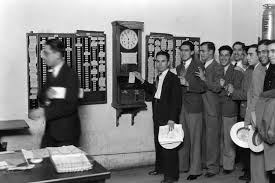I was in a fascinating discussion with a group of thoughtful sales managers. During the conversation, we were talking a little about the great resignation, quiet quitting, and doing the work.
A manager posed a question, “Clearly most sales roles and all managers roles aren’t something where you punch a clock. You can’t expect to do the job in 40 hours a week. It probably takes more, but how much? When do we know we are asking our people to do to much? How do we know when we are just spending too much time on the job.”
It is a fascinating question. I stumbled through a bit of an answer, suggesting, “It’s not the hours you put in, it’s what you get from those hours that you do put in.” We’ve heard other “wise sayings.” I used to say, “If you can hit your goals working 10 hours a week, spending the rest of your time on the golf course, more power to you!”
What these answers get right is that it has nothing to do with the hours we work. There is no “right answer” or “range” that we can assign to being the norm—- “The ideal work week should be somewhere between 37 and 48.45 hours, not including breaks….”
It is about what we achieve in whatever hours we work. But there’s a much more profound, less discussed issue. But it’s at the root of what we are seeing with quiet quitting and the great resignation.
In too many toxic work environments, even an hour is draining. It can be too much, and being forced to spend a minimum of 39 more hours, meet management expectations, is soul crushing. But that’s much of what we see in quiet quitting. People aren’t inspired, they aren’t motivated, they don’t feel listened to or cared for in the work place. As a result, they put in the hours, doing the minimum to get by. The time spent at work seems to pass so slowly and is filled with no meaning.
On the other hand, there are organizations where everyone feels energized, excited. They are contributing, the feel engaged, heard, and cared for. The hours fly, they are totally engaged, and are surprised to see they have put in a 10, 11, 12 hour day.
They are inspired and find great joy in everything they do. There’s an interesting correlation, people who find great joy in what they do, organizations that create work environments where people experience that joy are more likely to be the highest performers.
So, what’s the answer? How do we know how much time we should put into our work?
The answer cannot be expressed in hours. It can only be expressed in the following way: work as long as you feel great joy in what you are doing, and when working is where you derive your greatest joy. When you no longer get joy out of the work you are doing, you are in the wrong place?
Some might say, “That’s a terrible philosophy for work life balance…..” But isn’t work-life balance really about maximizing the joy in how we spend our time?
What do we do with this advice?
As individuals, we have to find work and organizations where we get great joy out of what we do, who we work with, and what we achieve. The moment we no longer find that, we need to move on—for our own sakes, for our peers, and for the success of the organization.
As managers and leaders, we need create organizations where people want to work. Where they feel valued, heard, included, and cared for. We have to create organizations that enable people to perform at the highest levels possible, to learn, to grow in their careers and ability to contribute at higher levels. We have to understand the importance of purpose, values, culture, leadership and identity; recognizing we want to attract those that are aligned with these things.
These are core elements to creating workplaces where people can find great joy.
We must not confuse “fun,” with “joy.” Providing fun work places, kitchen in every corner, on site cafeterias, on-site gyms, Friday night beer parties, and so forth doesn’t necessarily create meaning and joy. Remember, prisons have on-site cafeterias, on-site gyms, and, I suspect, the prisoners have ways to create their own parties.

Leave a Reply